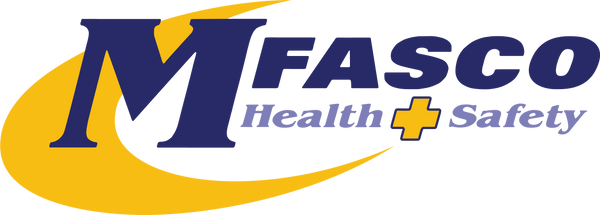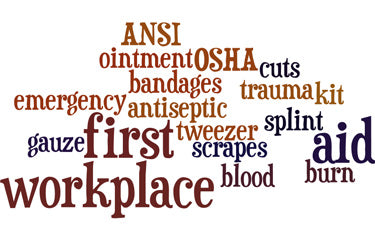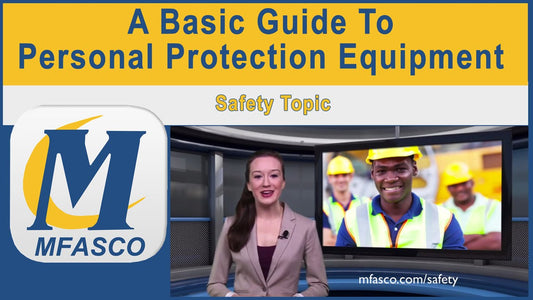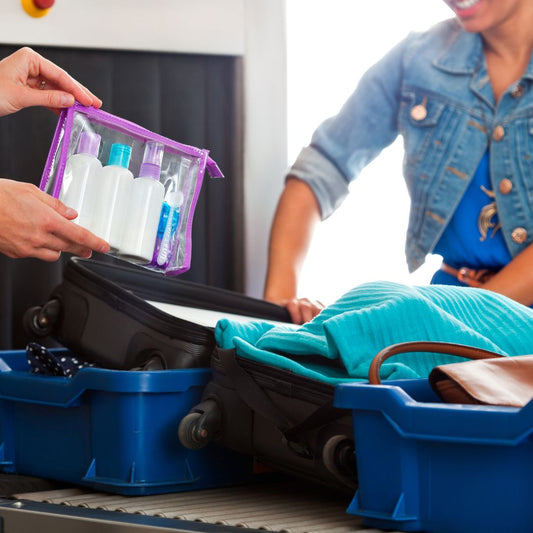5 Common Causes of Workplace Eye Injuries

With approximately 2,000 occupational eye injuries occurring each day in the U.S. alone, eye protection should be a main concern for employers managing hazardous work environments. More often than not, workplace injuries can be avoided by putting comprehensive health and safety protocols in place. This includes conducting a hazard assessment before work begins, training employees on the correct way to use personal protection equipment, and mitigating unnecessary dangers. When it comes to eye injuries, certain scenarios and jobs could lead to harm - here are five of the most common:
"Workers should undergo regular vision testing to promote workplace safety."
1. Uncorrected vision problems
Safety Business and Legal Resources, a company that helps businesses reach state and federal safety standards, notes that uncorrected vision can be a major cause of accidents. To mitigate this risk, workers should undergo regular vision testing. Consider that if a worker can't see well, it can cause two main hazards. For one, the worker may lean in closer to better see what he or she is doing, which could result in an eye injury. Secondly, a worker with uncorrected vision may make a miscalculation due to not being able to see, resulting in mistakes, accidents, or injuries to other parts of the body.
2. Masonry or carpentry work
The American Optometric Association notes safety experts and eye doctors believe the right eye protection can lessen the severity or even prevent 90% of these eye injuries. One reason for this frequency is that construction workers often complete tasks that send dust, wood chips, slag, or other particles into the air. The CDC points out that common masonry and carpentry tasks, such as sanding, grinding, hammering, and cutting, all send particles or scraps of excess material airborne. Make sure to have appropriate eyewear for the job at hand, and keep in mind that the sides of your eyes will also need to be protected.
3. Welding torches
Remember that when a person is welding he or she is not the only person that should be wearing protective eyewear. Bystanders, assistants, and supervisors should all also wear appropriate PPE when working near these tools. Since welding torches expose workers to high levels of UV radiation, specific safety glasses with UV protection against welding arcs and flashes are necessary.
4. Hazardous conditions  For workers tackling major projects outdoors, the day-to-day change of weather conditions can have a large effect on eye safety. For example, a particularly windy day at a construction site can send excess grit into the air, potentially leading to a higher risk of eye injuries than normal. Make sure to always have emergency safety supplies on hand, especially when conditions are unpredictable. In the case of wind-blowing particles airborne, the American Optometrist Association recommends having eye wash available to help irrigate the eye and remove any debris.
For workers tackling major projects outdoors, the day-to-day change of weather conditions can have a large effect on eye safety. For example, a particularly windy day at a construction site can send excess grit into the air, potentially leading to a higher risk of eye injuries than normal. Make sure to always have emergency safety supplies on hand, especially when conditions are unpredictable. In the case of wind-blowing particles airborne, the American Optometrist Association recommends having eye wash available to help irrigate the eye and remove any debris.
5. Wearing the wrong protection
To make workplace eye safety a main priority, you have to be wearing the appropriate glasses, goggles, or face mask for the job. If you're wearing the wrong type of protection, you're more likely to get injured - plain and simple. Deciding on the appropriate eyewear for a specific work environment should be part of the hazard assessment that is done before a job commences. Make a point of ensuring that all eyewear is undamaged, clean, and in good condition, and also update procedural practices as needed. If conditions on the job change, reevaluate the potential hazards and switch out your eyewear accordingly.
MFASCO Health & Safety Supporting Workplace Injury Prevention
It’s no secret that injuries and high employee turnover damage business profitability. Even if your workplace doesn’t have a lot of accidents, the perception of safety can be equally as important. No one wants to work in unsafe conditions, and team members want leadership that values their safety. Prevent worker compensation claims, prevent lawsuits, and show the team they matter with good injury prevention and response tools.
Workplace Injuries Prevention Products & Accessories:
Safety Glasses
Eye Care Supplies
PPE Masks & Clothing
Workplace Safety Equipment
Additional Resources for Preventing Workplace Injuries:
How do Safety Glasses Protect Your Eyes
5 Tips for Workplace Safety
How to Select the Right PPE Gear
Vocational School Safety Eyewear
How to Sanitize a Work Surface
The information provided in this article does not, and is not intended to, constitute medical advice; instead, all information, content, and materials are for general informational purposes only. For further Terms of Service, click [here].
Contributing Expert

Mike Brinker
Mike Brinker has been working in the first aid industry for over 35 years. He has worked with thousands of businesses,groups, and organizations to provide a healthy and safe work environment. Mike helped create “Make-A-Kit”, the internet's only online first aid kit creation tool. He has also authored many helpful first-aid and safety-related resource articles found at the MFASCO Learning Center.


























